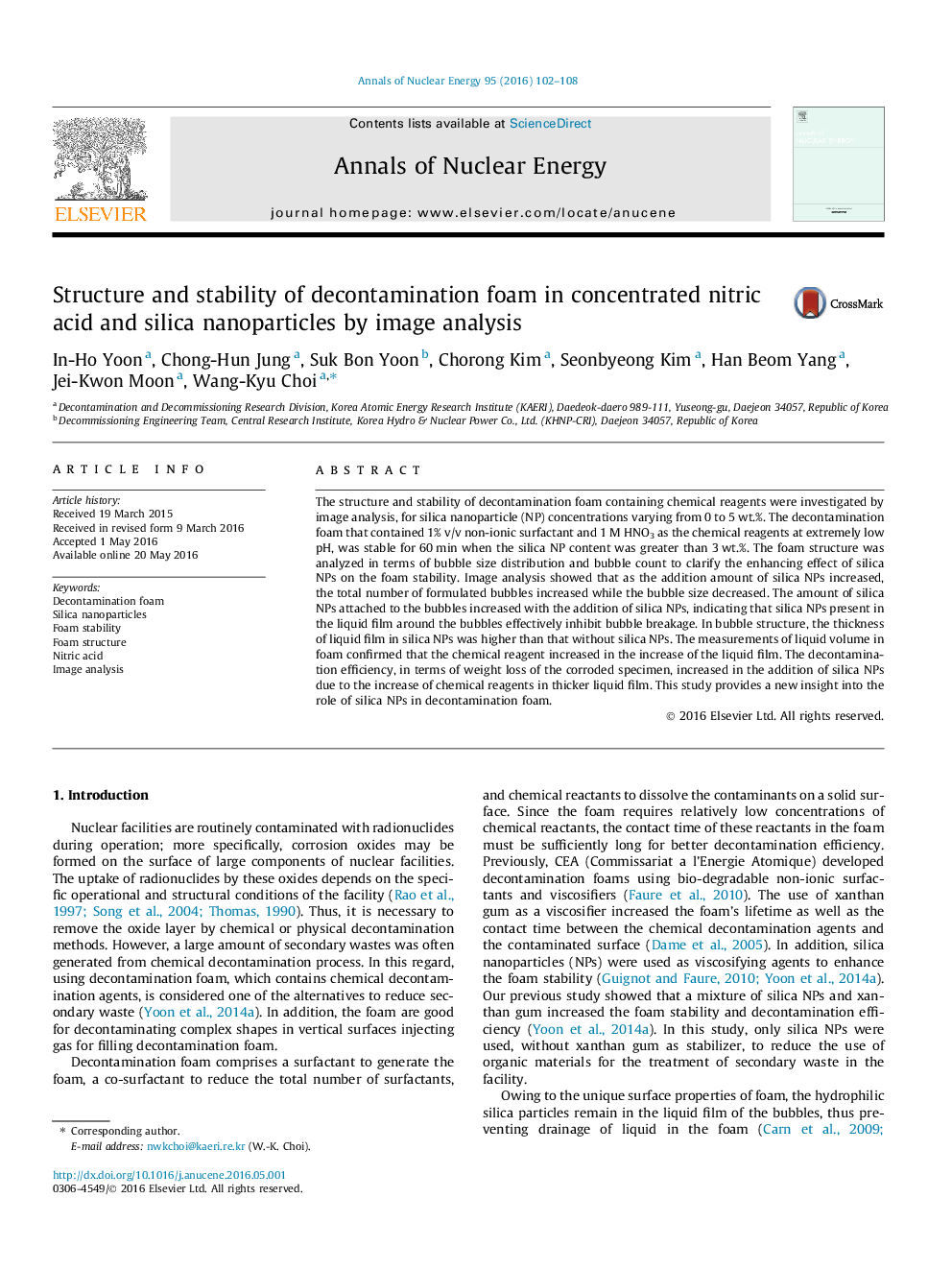| Article ID | Journal | Published Year | Pages | File Type |
|---|---|---|---|---|
| 1727962 | Annals of Nuclear Energy | 2016 | 7 Pages |
Abstract
The structure and stability of decontamination foam containing chemical reagents were investigated by image analysis, for silica nanoparticle (NP) concentrations varying from 0 to 5Â wt.%. The decontamination foam that contained 1% v/v non-ionic surfactant and 1Â M HNO3 as the chemical reagents at extremely low pH, was stable for 60Â min when the silica NP content was greater than 3Â wt.%. The foam structure was analyzed in terms of bubble size distribution and bubble count to clarify the enhancing effect of silica NPs on the foam stability. Image analysis showed that as the addition amount of silica NPs increased, the total number of formulated bubbles increased while the bubble size decreased. The amount of silica NPs attached to the bubbles increased with the addition of silica NPs, indicating that silica NPs present in the liquid film around the bubbles effectively inhibit bubble breakage. In bubble structure, the thickness of liquid film in silica NPs was higher than that without silica NPs. The measurements of liquid volume in foam confirmed that the chemical reagent increased in the increase of the liquid film. The decontamination efficiency, in terms of weight loss of the corroded specimen, increased in the addition of silica NPs due to the increase of chemical reagents in thicker liquid film. This study provides a new insight into the role of silica NPs in decontamination foam.
Related Topics
Physical Sciences and Engineering
Energy
Energy Engineering and Power Technology
Authors
In-Ho Yoon, Chong-Hun Jung, Suk Bon Yoon, Chorong Kim, Seonbyeong Kim, Han Beom Yang, Jei-Kwon Moon, Wang-Kyu Choi,
